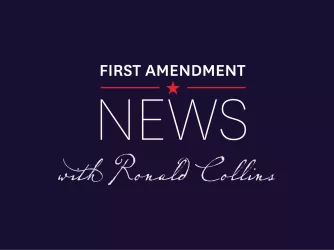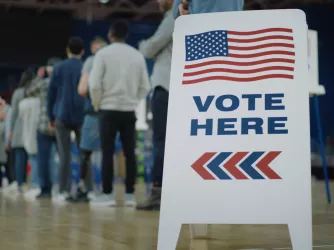Table of Contents
SIUC Sexual Harassment Policy Debate Rages On
In the wake of two high-profile cases of alleged sexual harassment at Southern Illinois University at Carbondale (SIUC)—and the two high-profile lawsuits that soon followed—the campus has been roiled in debate over the school's sexual harassment policy, which faculty members have been trying to amend for years to no avail.
Unfortunately, an article published this week in The Saluki Times, SIUC's institutional newsletter, has served to distort this important discussion. In attempting to clarify the precise legal definition of sexual harassment, Carmen Suarez, Director of the SIUC Office of Diversity and Equity, instead weighed in with some disturbing and inaccurate assertions about what constitutes sexual harassment.
Explaining her understanding of "hostile environment" sexual harassment, Suarez wrote:
The following parameters frame the concept of hostile environment:
- It is behavior that is unwelcome by the recipient;
- The behavior occurs in the context of a relationship where one person has more formal and/or informal power than the other;
- The behavior is sexual in nature or related to the gender of the person;
- The victim or the harasser can be a woman or a man and they may be of the same sex.
Hostile environment sexual harassment examples include:
- Unwelcome sexual remarks, jokes or taunting;
- Visual displays of graphic or pornographic materials;
- Repeated requests for dates;
- Demands or requests for sexual favors;
- Unnecessary and unwanted touching, grabbing, petting, pinching, backrubs, etc.;
- Leering, staring, or suggestive gestures;
- Unwanted emails, letters, and phone calls;
- Public humiliation;
- Taunts and slurs related to gender;
- Taunts and slurs related to sexual orientation.
To put it bluntly, Suarez is wrong.
In the educational setting, the Supreme Court has defined true "hostile environment" sexual harassment as behavior that is so severe, pervasive, and objectively offensive that it effectively limits or denies access to the benefits of school. Davis v. Monroe County Bd. of Educ., 526 U.S. 629, 652 (1999). True "hostile environment" sexual harassment is not, as Suarez offers, any and all "unwelcome sexual remarks," "suggestive gestures," "unwanted emails," and the like—unless such activity rises to the level of severity and pervasiveness necessary to constitute actual harassment.
It also is not, as Suarez offers, words or conduct deemed offensive in the "eye of the beholder"—unless the beholder is truly in the place of a "reasonable person." Suarez does offer an explanation of what a "reasonable person" is supposed to believe:
Off color jokes and comments, deliberate taunting of others, unnecessary touching, suggestive tones of voice when giving a "compliment," are all things reasonable people know makes others, and themselves, uncomfortable and/or threatened. That is not what an affirming campus environment is all about.
But harassment requires far more than feeling "uncomfortable." It is about not fully being able to participate in school because of the extreme treatment you are being subjected to. And you certainly are not being harassed simply because you perceive that you are not being sufficiently "affirmed" by others.
It is a healthy thing for members of the campus community to debate the origins and applications of SIUC's sexual harassment policy. But it is a dangerous thing when a university official who should know better is getting the very definition wrong. For a better understanding of how to interpret federal anti-discrimination and harassment law, see this letter from the U.S. Department of Education's Office for Civil Rights.
Recent Articles
FIRE’s award-winning Newsdesk covers the free speech news you need to stay informed.

VICTORY! Maine hospital backs down from defamation threat over teen’s criticism

Socratic free speech scholar Frederick Schauer dies at 78 — First Amendment News 446

FIRE reminds Michigan town that residents have the right to ‘concealed carry’ campaign literature in polling places
